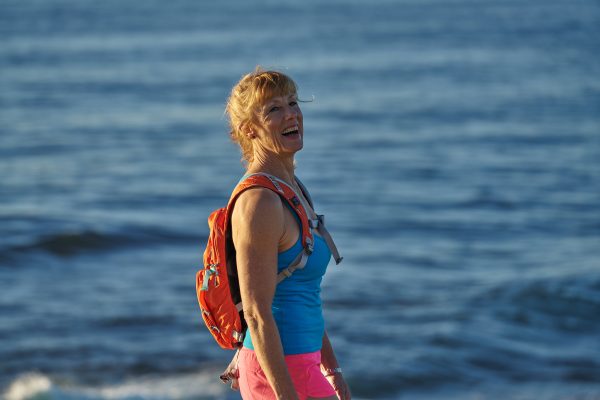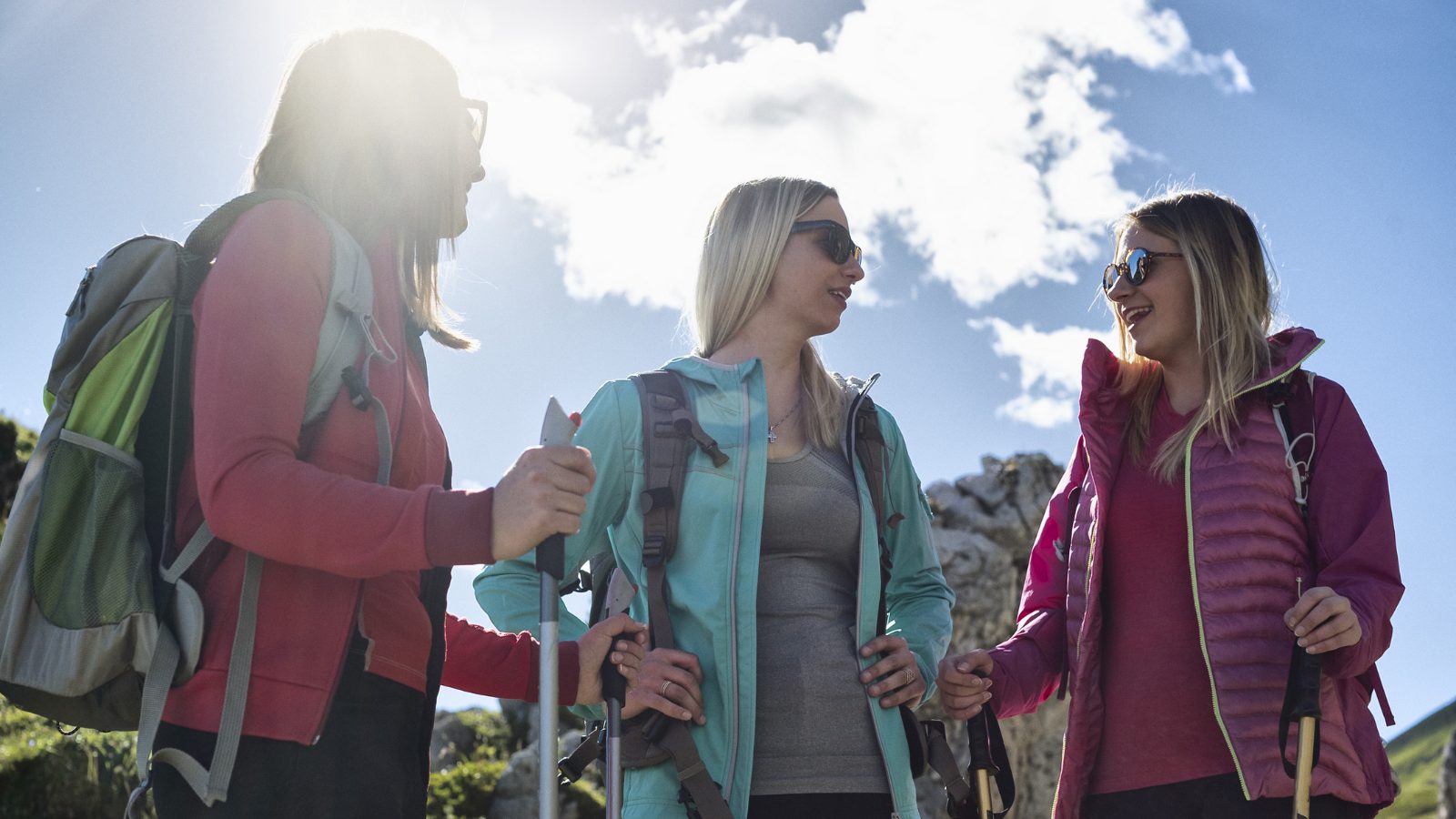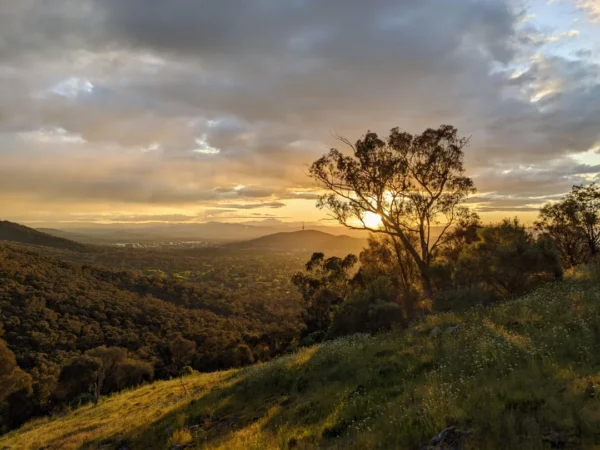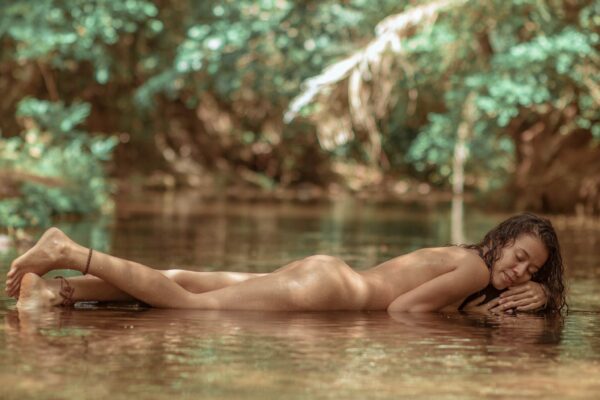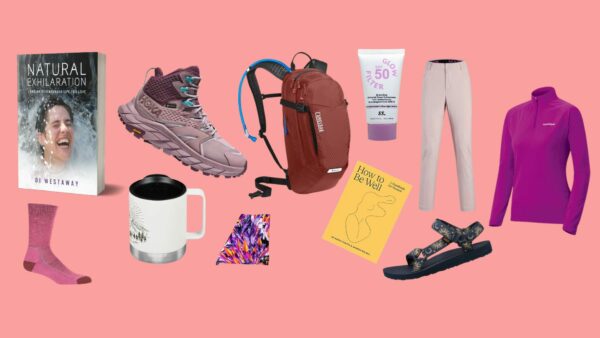“OMG, what am I going to wear?” This is often one of the first questions we’re asked by Wild Women when they sign up for their first adventure.
What you wear when you go hiking is very personal, but there are a few hard-and-fast rules. Cotton is death. Try before you buy. Don’t be lured by a sale. Don’t shop online. Try it in training first. Wear in your boots. Yes, rules are made to be broken, and these ones sometimes can be. But below is a list of all your basic essentials as well as my top tips and tricks when it comes to hiking attire.
Waterproof jacket
Your jacket must be fully waterproof and windproof and as breathable as possible. You should test this out by Trek Training in torrential rain before taking it into the wilderness. Gore-tex jackets are great when they’re new, but in time, the waterproof membrane loses its effectiveness. Another alternative to Gore-tex is a fabric called Nikwax Analogy.
Usually, the more you pay for a waterproof jacket, the more waterproof and breathable it is. However, NO fabric is completely waterproof AND breathable because this is impossible.
Look for a waterproof jacket that has vents under the arms to let the heat escape. Without breathability, you get wet from the inside from sweat, particularly when you’re carrying a full pack. There are always new fabrics coming onto the market, so take your time in selecting a waterproof shell. It could save your life.
Jackets that cover your bum when you sit are recommended for trekking and you need a hood that fits a beanie underneath it and pulls in around your face. It needs pockets, and should be able to be sealed at the wrist and around the waist.
Waterproof plastic coats, ponchos and spray jackets can work in the wilderness, depending on the conditions.
Really take your time choosing your waterproof jacket. There’s lots to learn and it will be one of the most expensive items you purchase, however it is very important that you make sure you do your homework and get the best jacket for the conditions you’ll experience.
Hiking boots
Ankle-high boots are recommended for most hiking activities because the ankle support can prevent injuries in the wilderness. Choose waterproof leather or Gore-Tex boots that feel deliciously comfortable like slippers when you put them on. Leather boots will take longer to wear in but will last longer. Gore-Tex are lighter and don’t need much wearing in. Gore-Tex lined leather boots will last years and be really waterproof if you look after them.
Try on as many pairs of boots as possible before you buy and don’t be tempted by sales. One Wild Woman On Top I know bought three pairs of boots on sale before she learned this valuable lesson. Some shops will let you take the boots home to wear around the house on carpet for a couple of weeks, just to be sure you’ve got the right ones. If you wear orthotics, make sure you have these with you when you choose your boots. Don’t be tempted to buy boots that are too small or too big. Ensure you try your boots on a ramp (good gear shops will have these) and that your toes don’t touch the front of your boots going downhill.

Hiking Poles
To prevent injury and reduce fatigue on your adventure, poles are essential. Go for lightweight, non-friction handles (not rubber) and shock-absorbing shafts. If you’re training on bush tracks or hard surfaces, ensure that you purchase rubber stoppers for the tips of your poles. This will give you better grip, protects the bush trails and will prevent the unpleasant clacking sound that comes from the metal tips.
Gaiters or cuffs
Gaiters are very functional in certain conditions. They protect the legs from scrub and snakes and keep stones, sand and seeds out of socks and shoes. They are also warm and can be quickly removed if you get hot. I often trek in shorts and gaiters and it’s quick to remove them without stopping to remove your pack. Go for the Velcro ones that fasten up the front.
Cuffs are the little protectors worn by workmen, and they are great for keeping sand and stones out of your socks. We highly recommend them for Trek Training and Coastrek.
Sun hat
We recommend a full-brimmed or legionnaires hat for hiking because you could be in the sun and/or wind all day. You want a hat that protects as well as staying on an being easy to carry when you don’t need it. Peaked caps can be okay but you’ll need additional cover in strong sun or wind.
Shorts
Hiking shorts need to be roomy or slightly stretchy, preferably with a pocket. Some of our members trek in lycra bike shorts or Skins and others prefer the long trekking pants with zip-off legs in light fabrics. The main thing is they don’t have massive seams or buttons around your hips where your pack harness sits because this can cause huge welts when you’re carrying a heavy pack. I quite like Lululemon shorts or leggings, but I also often hike in regular “fashion” shorts which are comfy and slightly stretchy.
T-shirts
I prefer short-sleeved t-shirts with collars to protect your neck. Of course, I’m a fan of purple. As this could be your base layer, it’s important to get a t shirt in a wicking fabric to wick the sweat away from your body so you don’t get cold when you stop. Do not use cotton t-shirts as your under layer on a hike in cold climates because if it gets wet, you’ll freeze.
Long-sleeved, button-up cotton shirts are great for extreme heat because they will protect your skin but wicking fabric is best for cooler climates where you get hot and cold.
Socks plus two pairs of sock liners
Quality socks are worth every cent because they help prevent blisters by wicking sweat away from your feet. You pay for what you get in socks. Some Wild Women prefer to wear thin sock liners underneath their socks to prevent blisters. The liners are quick drying so you will need fewer pairs on a big trek. Others prefer lashings of Vaseline to stop the friction. Some of our clients like toe socks, which are like gloves for your feet. These are designed to prevent blisters between your toes. We recommend a fresh spare dry pair of socks for sleeping.
However, working out what’s best for you is trial and error and it’s often difficult to reproduce the exact conditions you might experience in training.
Undies
Getting the right undies is not as easy as it may seem. Many Wild Women swear by the seamless varieties which eliminate the rubbing and welts caused by your pack hip belt and inner thighs when carrying a full pack. You can now buy special hiking undies which are designed to wick sweat away from your body and minimise odour. Personally, I like simple Bonds briefs. Others prefer boy legs. As with all undies, depending on the shape of your bum, different styles will work for different people. If you don’t want to carry lots of pairs of undies, you can try panty liners, but be mindful of the environmental impact. I prefer quick-drying, synthetic, cotton-gusset undies that can easily be washed out and dried overnight in my tent.
We have also learned that if an irresistible waterfall or plunge pool appears en route, underwear is occasionally on display, so make sure you don’t have holes in your undies!
Bras
Make sure your bras don’t have metal loops or adjusting straps where your pack presses into your collar bone. Some of our girls prefer crop tops or sports bras, but the most important concern is where the bra meets the pack. Experiment in training and find out what works best for you.
Wool top or jumper
Go for lightweight, wool and long sleeved. The tightly knit ones are warmer. Some manufacturers make stunning designs and colours with extra long sleeves that fit over your thumb and zip up necks to keep you really warm. You can also purchase synthetic variations, but we prefer wool or wool blends for warmth and light weight. Wool retains its warmth when it gets wet, which is a significant benefit in cold climates.
Polar fleece top and pants
You might need 200 or 300 weight, depending on where you’re going. Go for quick drying and not too bulky. There seems to be lots of options of style and colour for the tops, but stylish, well fitting pants are a little harder to find. Shop around and you will usually get what you pay for.
Thin thermal top and pants
You’ll usually need one set of polypropelene thermals for day warmth and spares can be carried for nighttime use. These also make good emergency clothing for day walks and they come in some great colours and designs. Wool is warmer and carries less odour, but will also cost more.
Gloves
There are lots of different types and weights of gloves. I get lots of use out of my cheap synthetic liners, which I use around the campfire at night, as well as under heavier gloves in cold weather. Depending on where you’re going, you might need as many as three pairs of gloves. Ensure you consider whether you need waterproof gloves, or gloves with good grip. Mittens are the warmest because they keep your fingers together, but dexterity is difficult, so you need to weigh up the pros and cons. I always take hand warmers with me for cold weather because I have poor circulation in my hands but most people only require these in extreme environments or altitudes above 5000m.
Beanie
This should be wool or thermal fleece and you should carry spares in winter. We recommend taking a beanie even if you don’t think you’ll need one. They don’t take up much space and really keep you warm. The weather can turn quickly in the mountains and a beanie is very handy because you can get it on quickly without removing your pack.
Sun Glasses
Go for comfort and good UV protection in sunnies. Good quality glasses will protect your eyes from UV rays, and also from the elements. Cheap sunnies from the $2 shop will not protect your eyes in the wilderness, so ensure that your glasses have UV protection. Depending on the environment, you might need wrap around glasses that block sun and wind. Some brands have attachments that can be added to assist with this. My view is that you don’t scrimp on eye protection.
Bandana or buff
Bandanas have a multitude of uses from wrapping injuries, to drying things, to keeping your neck cool and sun off. Buffs, which are stretchy cylinders of fabric, are great for sun protection, hair ties and warmth and they have many other uses and come in a variety of colours and designs. They’re not cheap but you’ll enjoy using them.
Crocs/thongs/Dunlop volleys
Lightweight emergency shoes are a great addition to your pack. I like Crocs because they’re lightweight, and comfortable around camp in most conditions and good for river crossings. Volleys are great for slippery wet rivers and rocks. Thongs are better than nothing.
Loved these ideas? You’ll love our blog about outdoor gear having a fashion moment, and the trends that we love.


